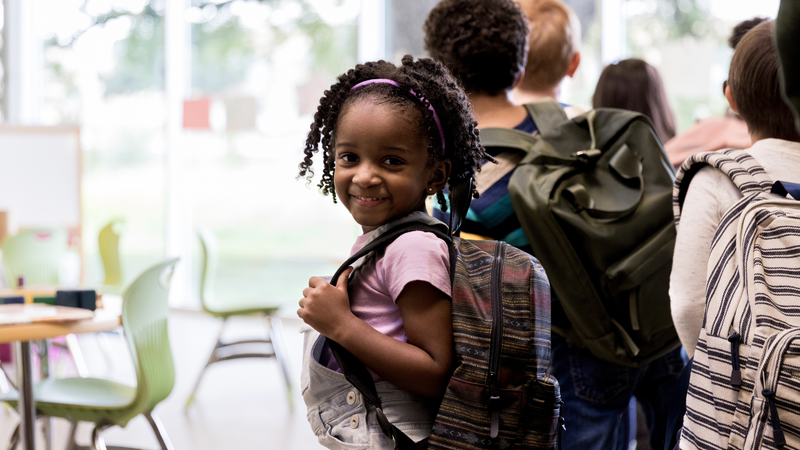My first classroom, of my own, was kindergarten. I never set out to be a kindergarten teacher exactly, but a school I knew had a great principal and was hiring, and so I went for it. I’m so glad I did. I learned so much that year that I still carry with me, but at the beginning, there was quite the learning curve!
I remember talking to my mom early on and saying, “Mom, they don’t know how to do anything!” after realizing that what I thought were simple tasks - like sitting on the carpet or lining up at the door - were brand new to them. I never understood all that kindergarten teachers do to acclimate kids to school (and life!).
One of those things that I quickly realized my students didn’t yet know how to do yet was line up at the door. I was a cool, laid-back, 26-year-old guy in a band. Nbd! Just say, line up at the door and roll with it!
Nope
As my kindergarten brethren know and the rest of you can probably predict, chaos ensued. There was running, pushing, and oh so many tears. That’s why teachers around the world have universally designed lining up. I’ve been in hundreds of schools and worked with some incredible early childhood educators and have witnessed so many scaffolds and strategies, so the ‘simple task’ of lining up can be pulled off.
UDL Transition Strategy: Lining Up
So that everyone can line up at the door in an efficient and orderly fashion, we have:
- Line order - Students are numbered and have a place in line. They know who they stand behind and in front of. No running required.
- Jobs - We still have the good old-fashioned line leader, to mix it up and make it equitable, the trusty caboose. Some classrooms even throw a door holder in there for good measure. This rotating set of jobs adds variety, meaning, and responsibility to the process.
- Songs - We’ve all heard the banger, “My hands are by my side, my eyes are facing front…” Just another clever way for students to know what is expected.
- Dot spots - To make sure there’s no bumping into each other, we have literal dots on the floor that students stand on, strategically placed a few feet apart. (Wouldn’t mind this implemented at the airport now that I think of it.)
This is just one example of what it looks like to universally design a transition. For kindergarten teachers, the barriers to success were that some students might rush to be first, others are still learning to control their bodies, some are still working on personal space, and early childhood students need predictability. All of that is taken into account with these supports.
I’ve worked with teachers to universally design other hot spot transitions like their return from lunch recess, as students pour in, dysregulated from the wrongs they suffered at kickball, hot from the exercise, and needing to process their emotions. This is a predictable result of recess in elementary school, but often, dealing with the aftermath means altering plans, cutting lessons short, or finding something for everyone else to do while you solve the problem.
UDL Transition Strategy: Post-Recess
One strategy is to make ten minutes post-recess quiet time. During quiet time, the lights are off, calm music might be playing, and students have the choice of a few quiet activities (research tells us that 2-4 choices is the sweet spot). These activities could be reading a book, coloring, drawing, or writing in a journal. I’ve seen sudoku or crosswords, math word problems, and rebuses. Whatever you choose, carve out ten minutes post recess for students to get regulated for the next part of the school day, have some much-needed quiet time, and provide you with ten minutes should you need to help resolve a conflict or process emotions without your lesson taking a hit.
UDL Transition Strategy: Changing Classrooms/Leaving Classroom
Another transition opportunity to universally design is packing up to go home or change classes. When we say to students, it’s time to pack up, we are actually asking them to do a series of tasks that, when all completed, result in being packed up. That might be putting away work they are in the middle of, taking other work home, putting away materials, and navigating to lockers, cubbies, and backpacks. Those tasks are taxing on executive function skills, which is why some papers end up crumpled at the bottom of backpacks, stuffed in cubbies and lockers, or lost altogether. One way to support students in this is to provide visual supports at the point of need for all the steps to the task. (This works great at home too for cleaning up a room, getting ready for school, or bed). Create a laminated checklist of steps, complete with icons or other visuals, including a picture of what success looks like.
💡Tip! Use an AI tool like Goblin Tools and Claude.AI to save time. Watch this tutorial to see it in action!
As we wrap up this school year, which of your transitions could use a makeover? Think about what barriers exist for students during that time. Then proactively plan for things you could do to remove those barriers.
Learn how to universally design your practice to increase access and student outcomes. Explore online courses and professional development options.



